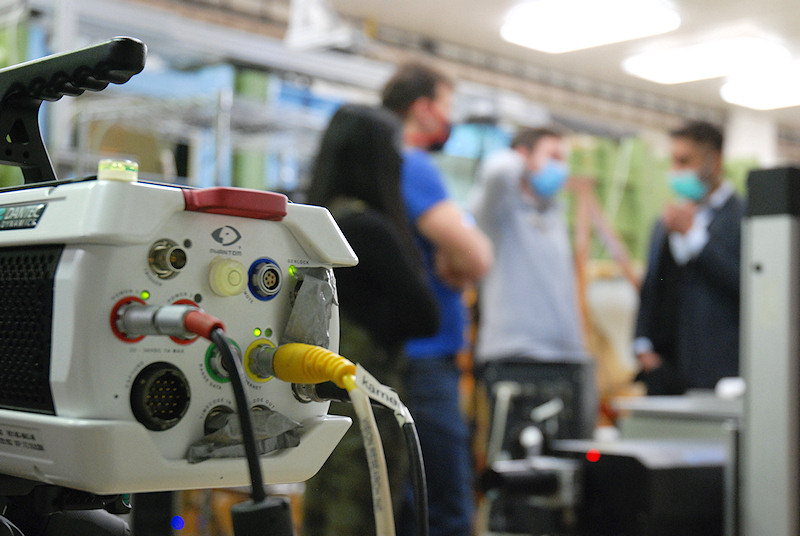Laboratory of Turbulent Shear Flows
|
Department: Department D 1 - Fluid Dynamics Head: Ing. Pavel Procházka, Ph.D. |
|
Problems concerning the transition from laminar shear flow to turbulence and also the structure and development of turbulent flow are studied in the Laboratory of Turbulent Shear Flows. The conditions for the formation and development of “coherent structures” and the issues of the stability of laminar shear flows are analyzed. This issue is studied on “complex flows”, which are various cases of simple flow interactions (e.g. a fluid jet and cross stream) or the interaction of a fluid flow and a body (e.g. the circulation around a cylinder or an elastically-fixed airfoil). Recently the laboratory’s work has been oriented on the issue of controlling certain types of flows where the flow is purposefully influenced in order to achieve an optimized structure from the perspective of turbulence or boundary layer detachment. Special experimental methods, based on the use of hot-wire sensors and optical principles (PIV), are also used and developed in the laboratory.
|
Head:
Ing. Pavel Procházka, Ph.D.
Research workers:
Ing. Pavel Antoš, Ph.D.
prof. Ing. Václav Uruba, CSc.
Ing. Vladislav Skála, Ph.D.
Technician:
Bc. Ondřej Suchý
In the laboratory the projects concerning the turbulence appearance are addressed as a rule. Mainly the turbulent flow in shear layers is studied, especially in boundary layers. Diffusivity, stability and other features of those flows are examined, which all have something to do with the flow structure.
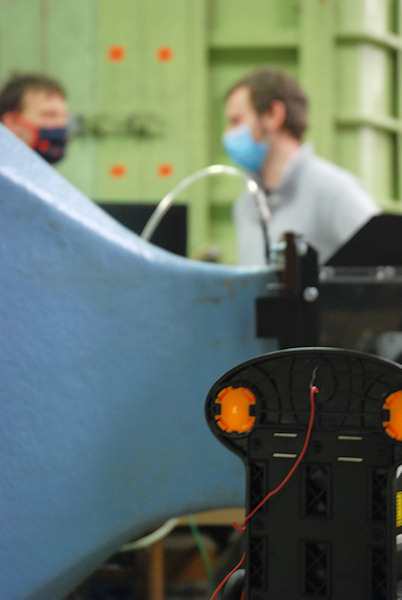
Several projects deal with transition of shear flows of various types from laminar to turbulent states. Effect of various specific conditions is studied in details (e.g. different disturbances in the flow or on the wall surfaces, pressure gradient, etc.).
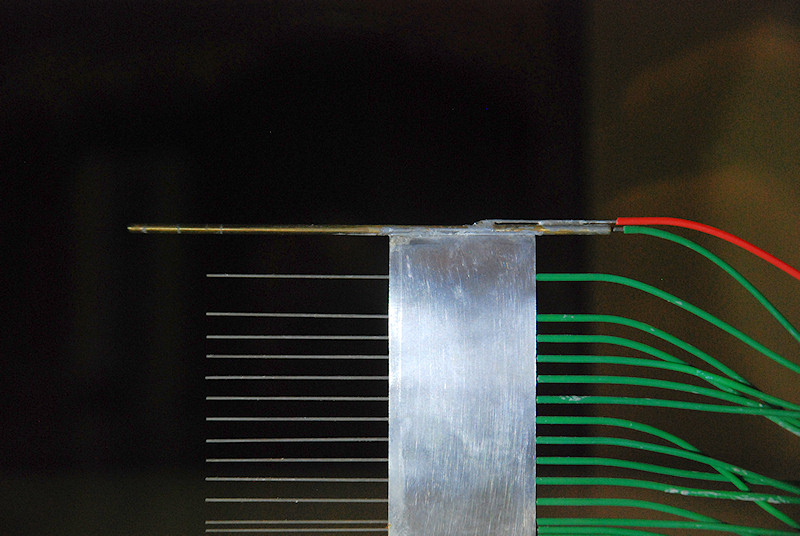
Detail of a Pitot rake tube
The other projects are related to flow control, which means the methods of the flow-field topology modification. As an example, a boundary layer transition to turbulence or its separation could be mentioned. The active and passive methods are applied. In the laboratory the active control strategies using synthetic jets, plasma discharges or suction and blowing the fluid are applied. The passive strategies cover vortex generators or surface structure (roughness) modifications.
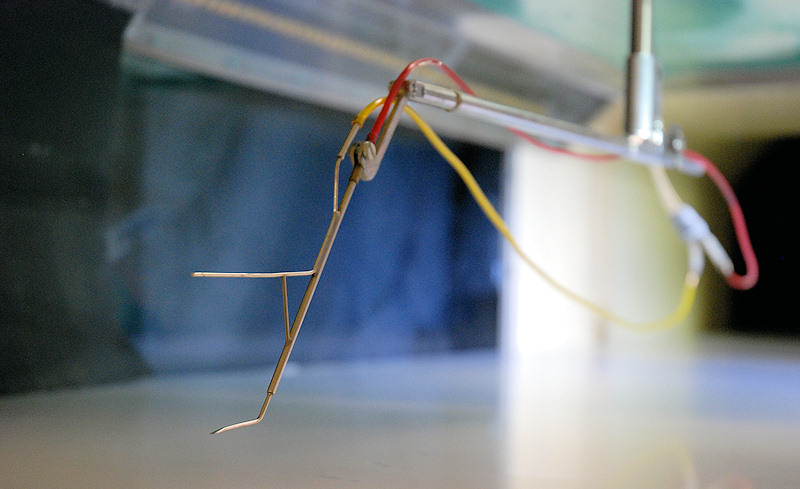
Pitot-static tube for velocity measurement of air flow in the wind tunnel measurement section
Further, the complicated complex flows are studied. They are firstly nonstationary, changing in time, secondary they are of fully 3D topology. These are highly turbulent flows consisting of vortical structures with various orientations in space very often. This demanding research is carried out using the specially developed methods of both data acquiring and analysis. The methods of spatio-temporal data analysis are continuously developed. The Oscillation Pattern Decomposition method was suggested in the laboratory for such task.
The next type of problems solved in the laboratory is study of bodies with highly 3D geometries, as the cuboids, finite length cylinders or theirs assemblies. Also the flows around streamlined bodies are investigated, this could be an airfoil or simply thin flat plate with non-zero angle of attack.

PIV measurement of oscillating NACA 0010 airfoil in air flow
The next field in the laboratory focus is research of two-phase flows, especially aerosols in an air flow. The droplets parameters in the aerosol, theirs density, sizes and velocities are investigated using special optical methods.
Last but not least the development of advanced experimental techniques in the laboratory is carried out to evaluate specific physical quantities. As an example the method based on hot-wire measuring technique could be mentioned, which allows for simultaneous evaluation of instantaneous velocity and concentration and high frequency fluctuations of both quantities.
In the laboratory there are several wind tunnels with various parameters.
The biggest facility is the close circuit wind tunnel with the test section of 0.5 x 0.7 x 1 m3, air speed is in the range from 5 m/s to 50 m/s, the flow quality is standard, intensity of turbulence is about 0.5 % of the mean velocity. There is a family of generators of turbulence available for this tunnel, which allow for setting the flow structure in the test section inlet in a broad range of parameters, turbulence intensities and length-scales. The facility is used particularly for studying of the boundary layer on a flat plate with outer stream perturbations and for measurement of aeronautical airfoils characteristics.
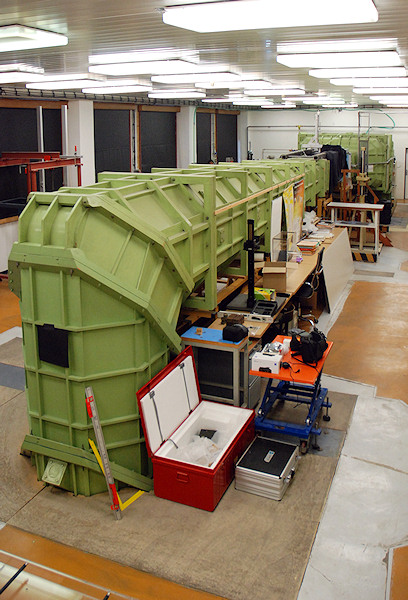 Closed-loop wind tunnel
Closed-loop wind tunnel
Further, the laboratory uses two blow-down wind tunnels with air output into surroundings. Various types of test sections are available, the rectangular cross-section 0.1 x 0.25 m2 and 0.25 x 0.25 m2 and the circular with diameter 0.1 m. The test-sections lengths could range from a few centimeters to 4 m. The flow-field in a test-section inlet is of high quality, departures of the mean velocity from the nominal value are smaller than 1 % (with exception of thin boundary layers) and intensity of turbulence is below 0.1 %. The maximal velocities are from 25-50 m/s for the rectangular test-sections and about 100 m/s for the circular variant.
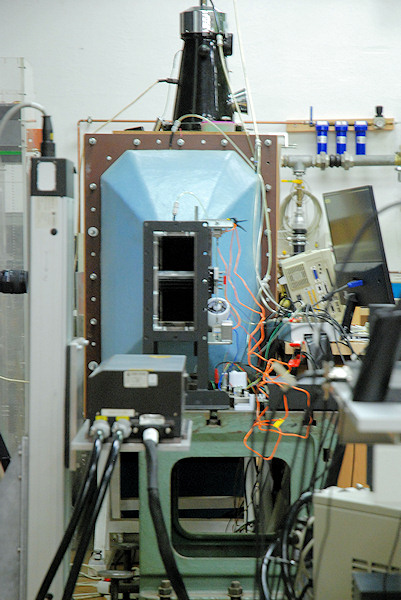 Blow-down wind tunnel orifice
Blow-down wind tunnel orifice
There are also various special facilities in the laboratory, dedicated to specific research or probe calibration. For example, there is a facility for directional calibration of probes, or another for experiments in fluids of various chemical compositions (mixtures of CO2, He, air, etc.) in variable pressures (from vacuum to 8 bars). For this experimental research there are several compressors and pressure vessels available, the biggest with the volume of 14 m3.
At the laboratory there is an adequate instrumentation and required know-how at disposal, covering both standard and special experimental methods in fluid mechanics.
Significant number of pressure transducers of various types and ranges are available, including standard laboratory ones, high-precision transducers and pressure scanners with up to 64 taps.
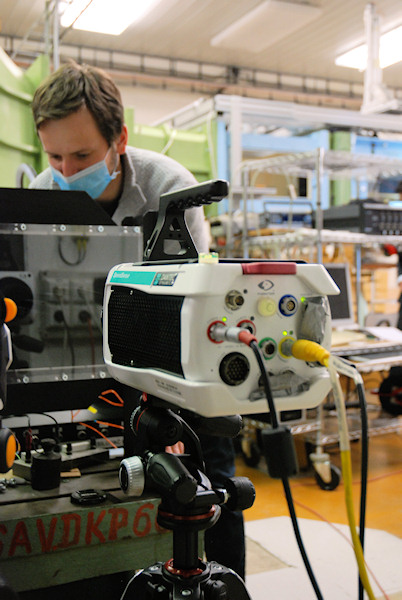
The other method applied in the laboratory is the optical method Particle Image Velocimetry (PIV). The method uses the double-pulses laser and digital cameras for velocity fields evaluation. It evaluates 2 or 3 instantaneous velocity components with the repeating frequency up to 2 kHz. The method allows for observing dynamical changes of the flow structure both in time and space.
The other method with long-time application in the laboratory is the hot-wire anemometry method. This method is used for evaluation of high-frequency fluctuations in a given point in space, it works for frequencies of order of 100 kHz. The know-how in the laboratory covers special applications of the method allowing evaluation of 2 or 3 velocity components, evaluation of fluctuations of temperature and/or molar concentration. The experiments were carried out in various environments including measurements in situ in a real steam turbine under operation.
Wide choice of various standard instrumentation is available in the laboratory including measuring equipment with analog/digital converters of several channels with high frequency, or equipment for temperature measurements, etc. There are also numerous automating means, e.g. various motor traversers, rotation units and other elements for remote control.
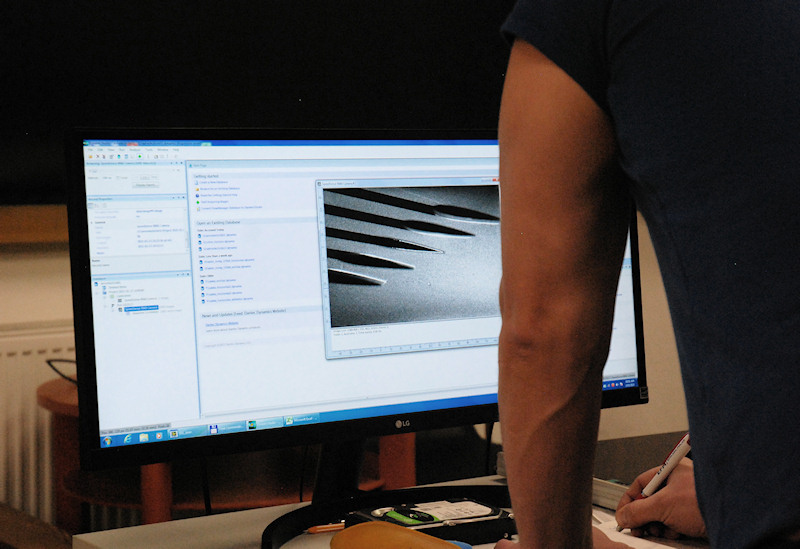
The topics for doctor and magister studies are offered, they are consistent with the projects under solution. The subjects are related to a problem of a shear flow transition to turbulence, study of developed turbulent flow, boundary layers or flow around various bodies. Alternatively they are concentrated on such a flows analysis and modelling. Last but not the least they deal with the flow control strategies, i.e. modification of the particular flow-field by various means, both passive and active.

